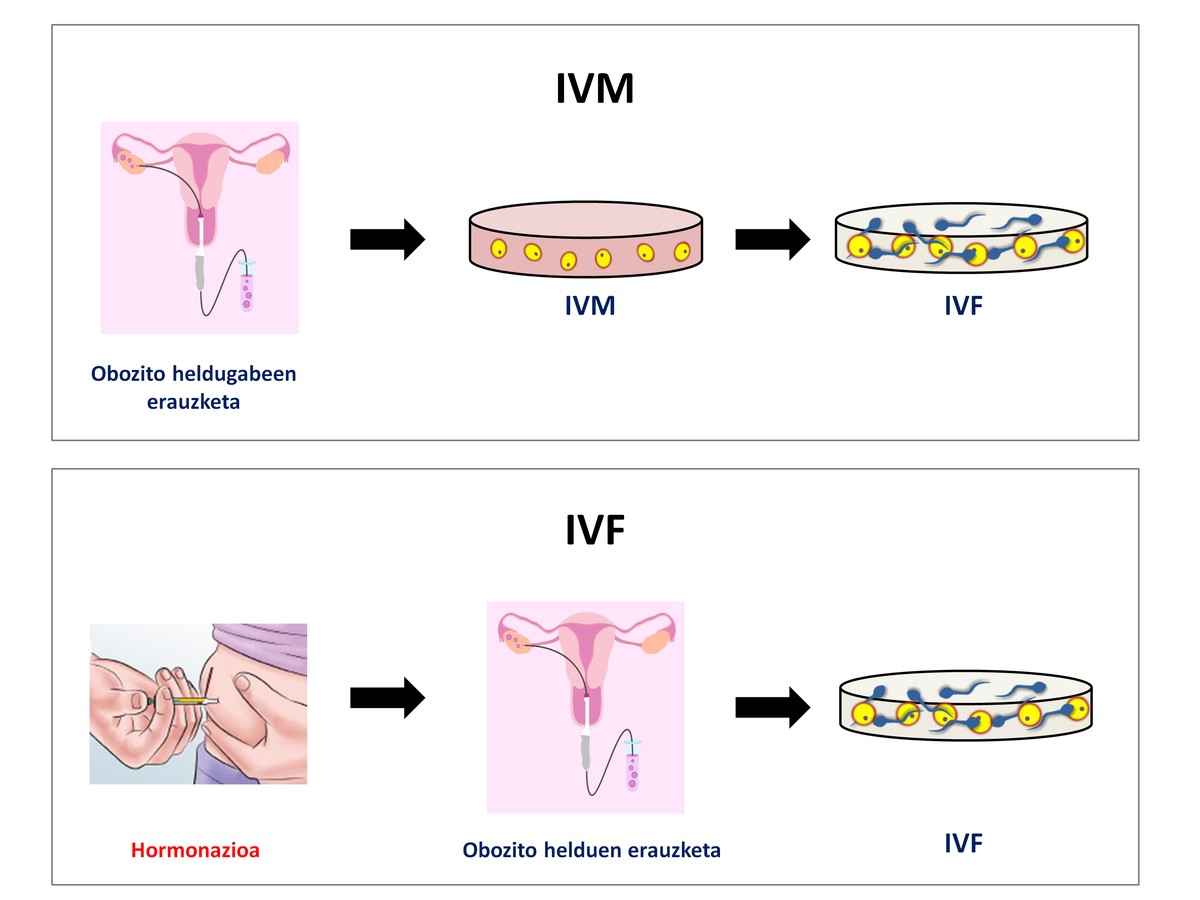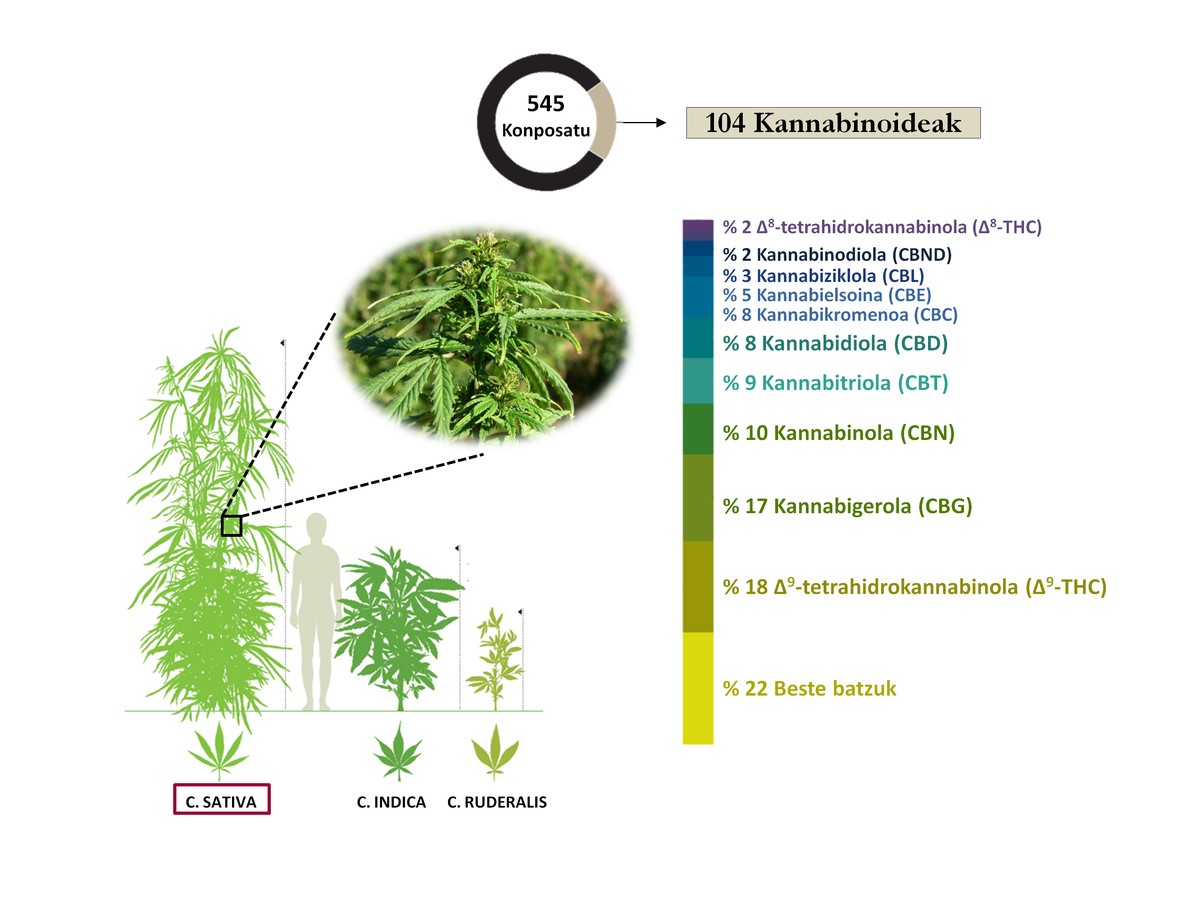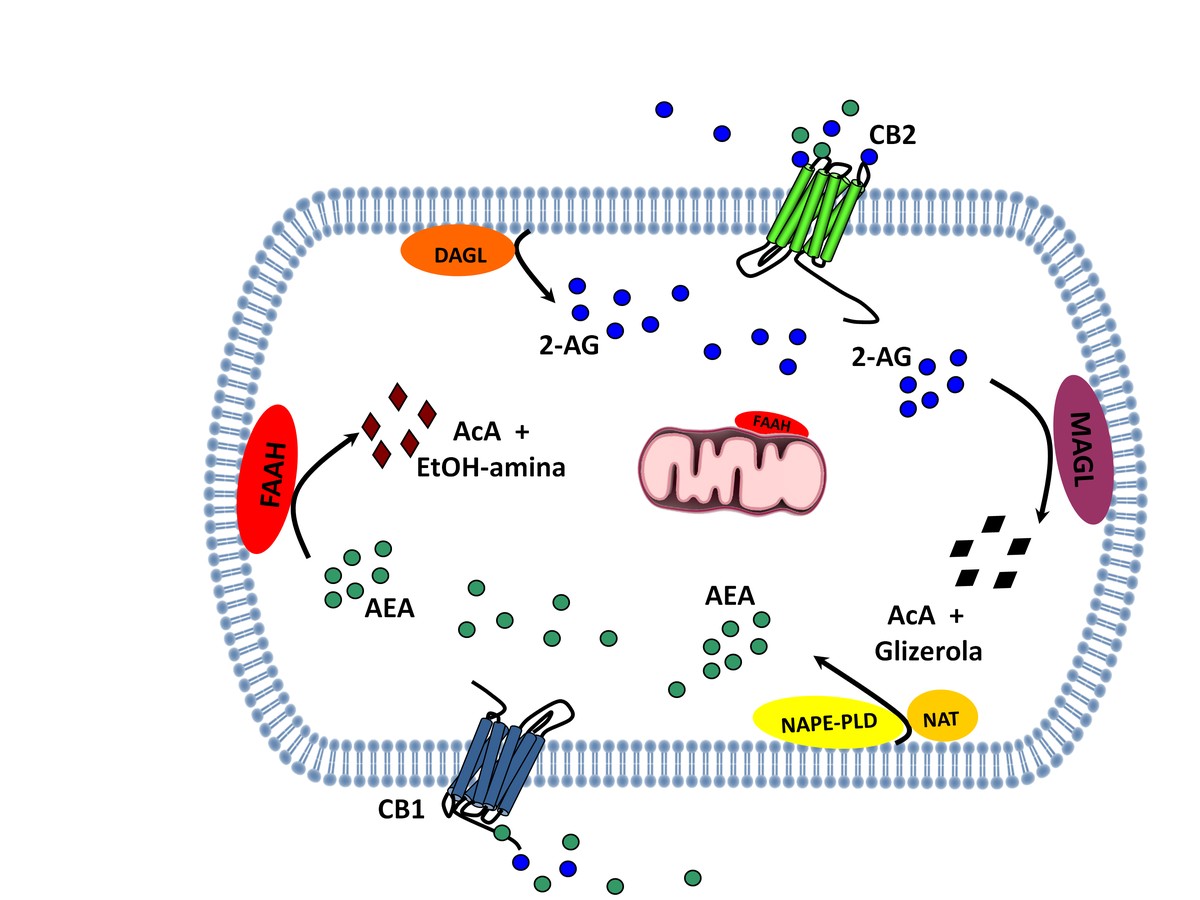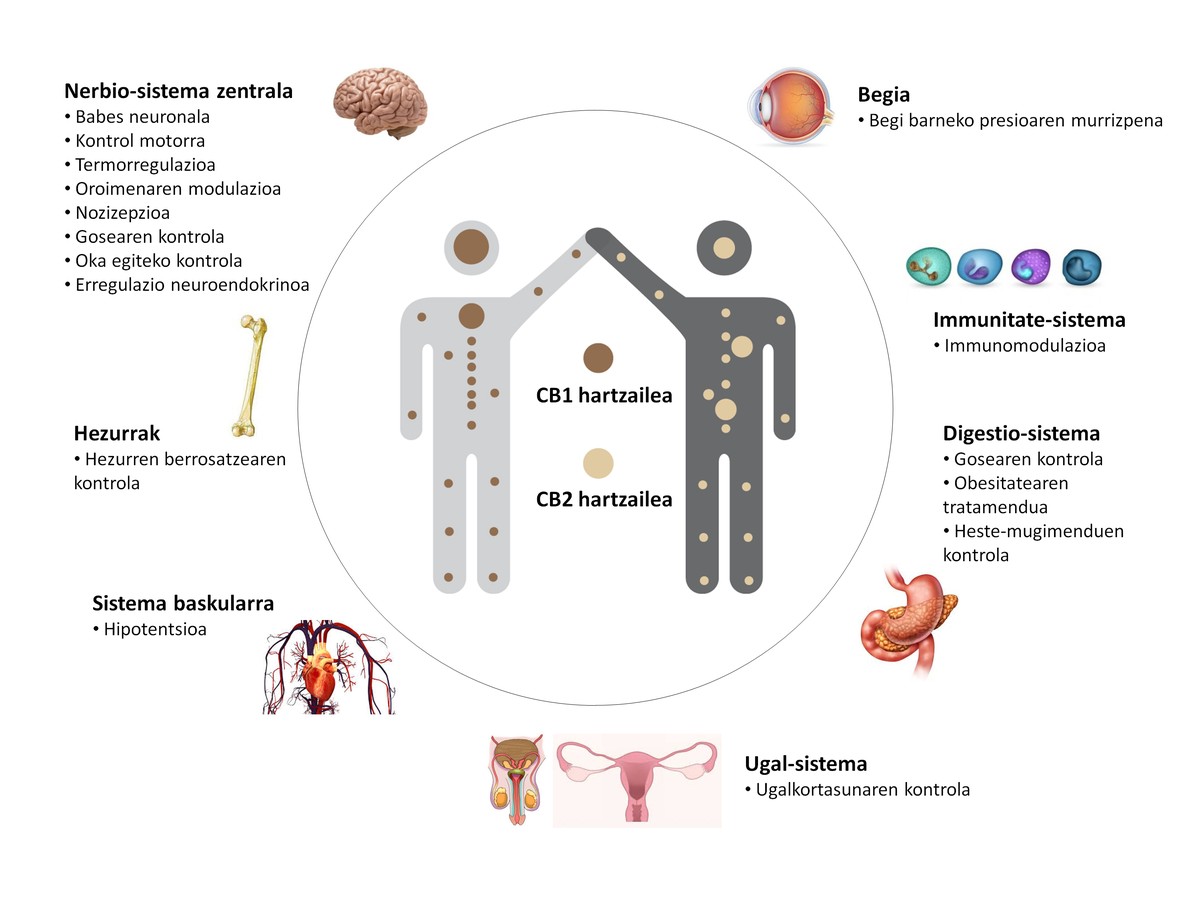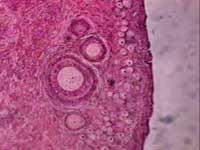THC phytocannabinoid: ally of women who need help in reproductive techniques?
2020/07/07 Lide Totorikaguena Iturriaga - Fisiologia Saileko ikertzaileaEHUko Medikuntza Fakultatea Iturria: Elhuyar aldizkaria
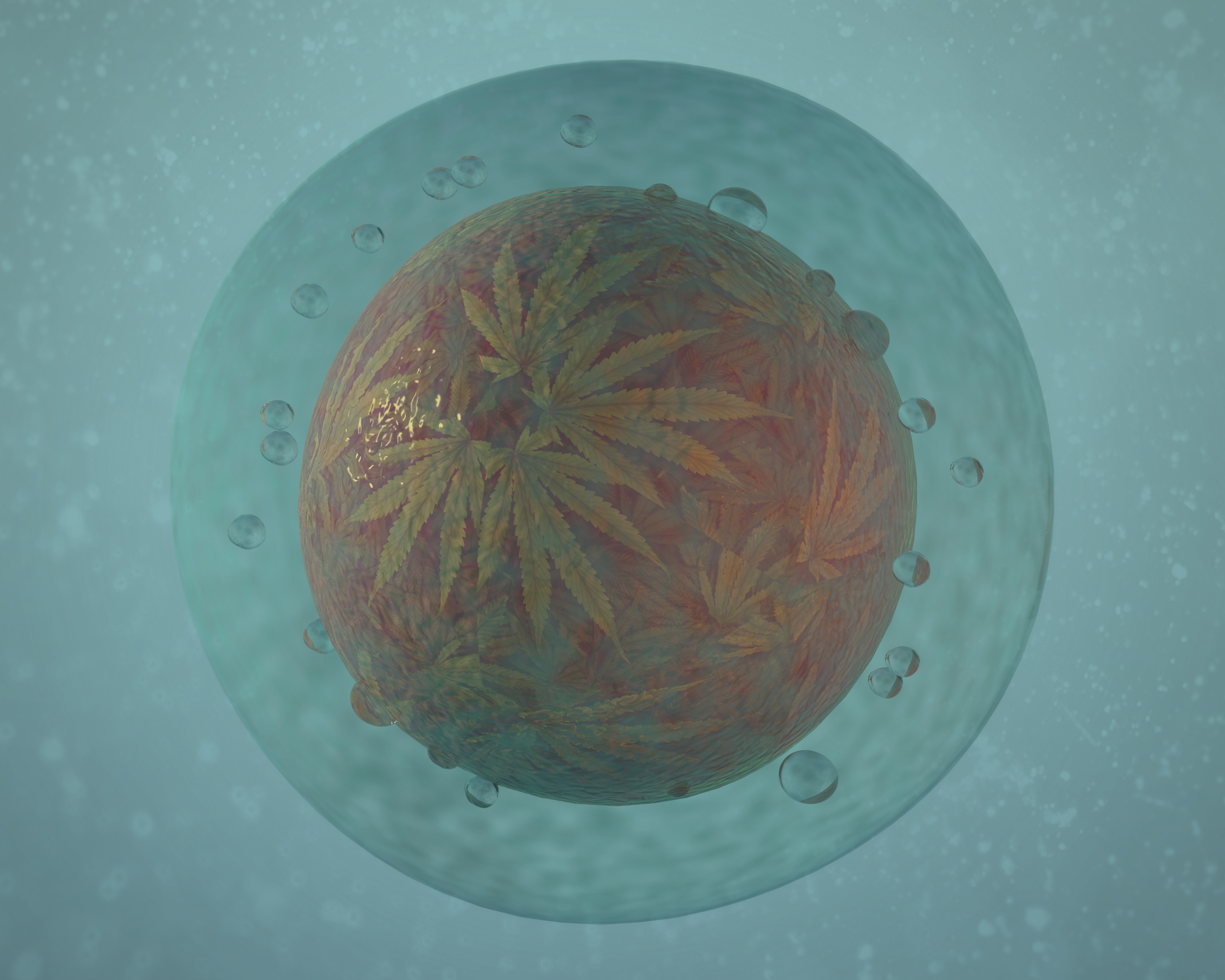
In Western societies, the number of people in need of assisted reproduction techniques increases year after year, both due to the increase in fertility problems and the modification of family models. Among assisted reproduction techniques, the technique of in vitro oocyte maturation (IVM) remains unused, but its implementation would mean a qualitative advance due, among other things, to the lower costs, the possible side effects of gonadotropin administration and the only possibility of pregnancy for many women. Through this technique, unmature oocytes are extracted to the patient for exogenization in growth media. The therapeutic use of cannabinoids to improve the efficiency of IVM media was analyzed, using them as a complement to them.
Dark side of reproductive techniques
In the most commonly used assisted reproduction techniques, artificial insemination, in vitro fertilization (IVF) and intracitoplasmic sperm injection (ICSI), women need to take high hormone doses for 1-3 weeks to produce and extract as many adult obocytes as possible. But what problems does taking hormones have? Among them, 10% of women respond poorly, 16% are at risk for ovarian hyperstimulation syndrome and, of them, the risk of dying in the most serious cases. On the other hand, hormonal treatment is not recommended for some women, for example, for those with early ovarian failure (POF) and polycystic ovarian syndromes (PCOS). It is also contraindicated for patients who have received cancer treatments. Add to this the psychological and economic cost.
In vitro oocyte maturation technique (IVM)
Therefore, more and more oocytes need to mature in vitro (IVM). In our society the delay of children is becoming more and more frequent, which affects the quality of germ cells, so the need for external assistance that improves the quality of germ cells is increasing. In addition, more and more single-parent families and homosexual couples, and having no sterility problems, IVM would be the best option for women not to have to take the hormone. The IVM technique is a transformation of in vitro fertilization (IVF) that consists in the extraction of immature oocytes by the patient, ovaries not stimulated with hormones or ovaries little stimulated, arriving in growth media to try to achieve pregnancy through other reproductive techniques (Figure 1). The IVM technique was proposed by Pincus and Enzmann in 1934. However, until 1991 the first human pregnancy was not described by MRI, and thereafter, about 5,000 children were born in the world using this assisted reproductive technique.
In animal models, IVM has become the most successful livestock breeding method, but although the IVM technique has lower costs and lower side effects, very little is still used in human-assisted reproduction (less than 1% of all cycles). On the one hand, the degree of success of the results of other techniques has not been achieved and, on the other hand, there is a great ignorance about it. And we find a dichotomy: although MRI is the most used technique in animals, this does not happen in the case of humans.
Oocyte maturation process: germ cell age
The maturation process of the oocytes of mammalian females has a great importance in fertility, since it is essential for the fertilization of the egg. The maturation of oocytes is a physiological event prior to the development of fertilization and embryo. In mammals, at birth, oocytes remain unripe and are detained in Profas I of meiosis. These oocytes are called GV due to the appearance of the germinal gallbladder, a situation in which they will remain blocked until they reach sexual maturity. In each reproductive cycle, and with monthly ovulation in the case of humans, meiosis is reactivated and some changes occur in the obocyte until maturation ends. Adult oocytes are called MII, II. because they are in the metaphase of meiosis. For a sperm to fertilize, oocytes II. must be in metaphase and if fertilization occurs meiosis will end to start the development of the embryo with the mitotic division of the zygote (Figure 2).
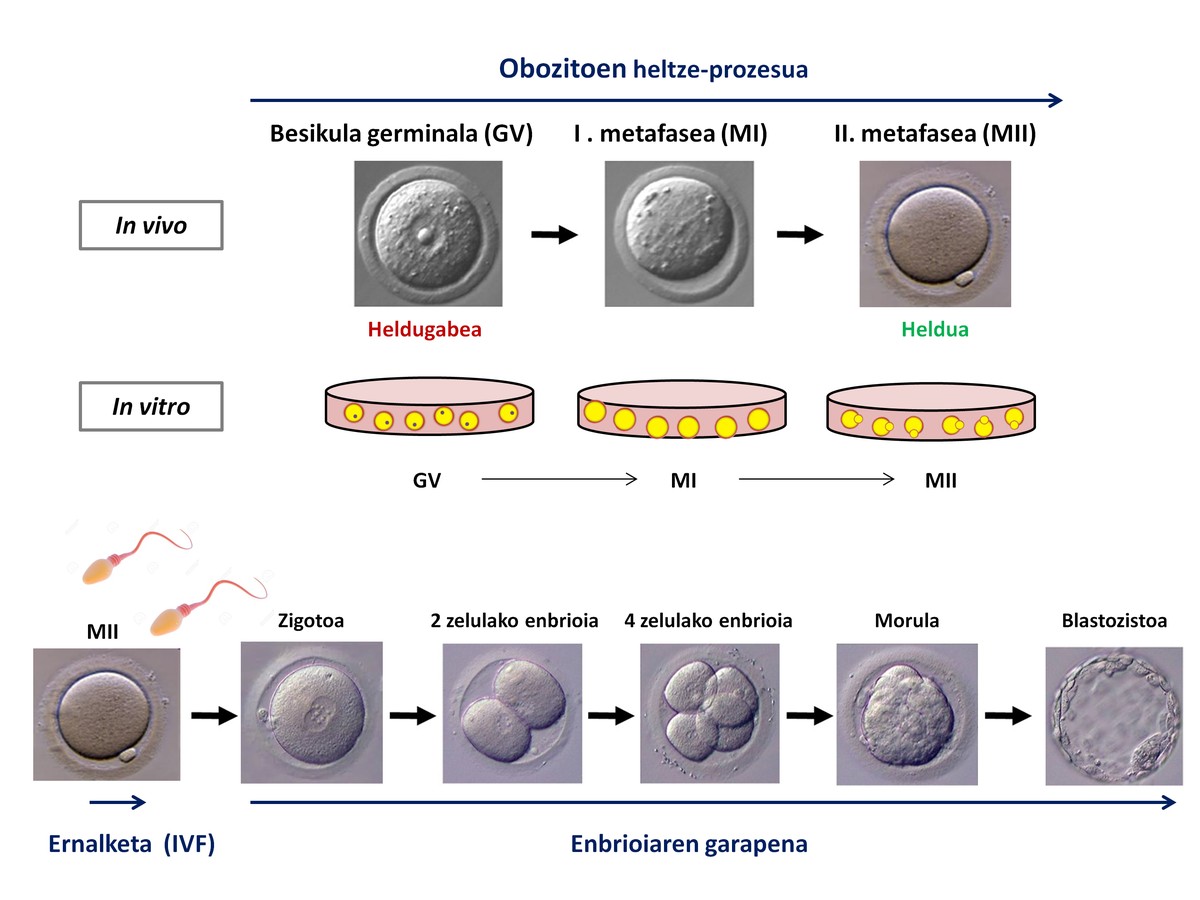
Although there are still no known signs that activate the maturation of oocytes, there is increasing certainty that many of these signals depend on receptors associated with G proteins (GPCR). The activation or inactivation of these GPCR receptors light the signaling helmets that modulate the maturation process of the obocytes, so if external signals are found that cause and regulate the reactivation of meiosis, it may be possible that the maturation process can be controlled by drugs.
Cannabinoid system in fertility
Phytocannabinoids are lipophilic compounds from the cannabis plant (Cannabis sativa L.). Research on cannabinoids predominated from 1964, when the most abundant psychoactive component of this plant was discovered in ?9-tetrahydrocannabinol (THC). THC is primarily responsible for bioactive effects and the most abundant cannabinoid, although other compounds have also been identified in hemp (Figure 3).
Shortly thereafter it was known that cannabinoids were associated with specific receptors of the organism, CB1 and CB2. Thanks to these pioneering discoveries, the internal animal cannabinoid system (Figure 4) was described below: in addition to the cannabinoid receptors that compose it, its internal binders (endocannabinoids), its synthesis enzymes (diazilglycerol lipase (DAGL) and N-arakidonoylphosphatantholamine (NAPE-FAPLD) and degradation GLIMASS were identified.
Knowledge of cannabinoids has increased considerably in recent years and research has concluded that neuromodulation is one of the most important functions of the cannabinoid system. The activity and mechanisms of action of the endocannabinoid system have occurred not only in the central nervous system, but also in peripheral systems and/or tissues (Figure 5).
Among other things, it is stated that the cannabinoid system is related to fertility: gametogenesis, maturation, fertilization, embryo implantation, placency, pregnancy and childbirth. In addition, it has been described that all the machinery of the cannabinoid system is found in the organs, tissues and cells of the reproductive system.
Therefore, if cannabinoids were to take part in the reactivation of meiosis, would it be possible to exogenically reactivate meiosis through cannabinoids and modulate the process of in vitro maturation? Well, in experiments with cows and mice we showed that using synthetic cannabinoids we confirmed our hypothesis that cannabinoids can modulate the maturation process of oocytes.
Possible modulators of the ripening process of phytocannabinoid oocytes
Since cannabinoids are able to modulate the maturation process of the obocyte, the role of the phytocannabinoid THC in the IVM process was determined. THC has aroused great interest since its synthetic analogue (dronavinola and nabilone) has been authorized to be used in medicine. In addition, the use of phytocannabinoids rather than synthetic cannabinoids is easier and more reliable when directing to the clinic. To confirm the influence of THC in the maturation process, we reached in vitro obocytes after the incorporation of THC into the maturation medium (Figure 6). In addition to exogenous modulation of the process of maturation of oocytes by THC, it was observed that this phytocannabinoid can improve its development capacity and give positive results by observing the rate of posterior embryo IVF.
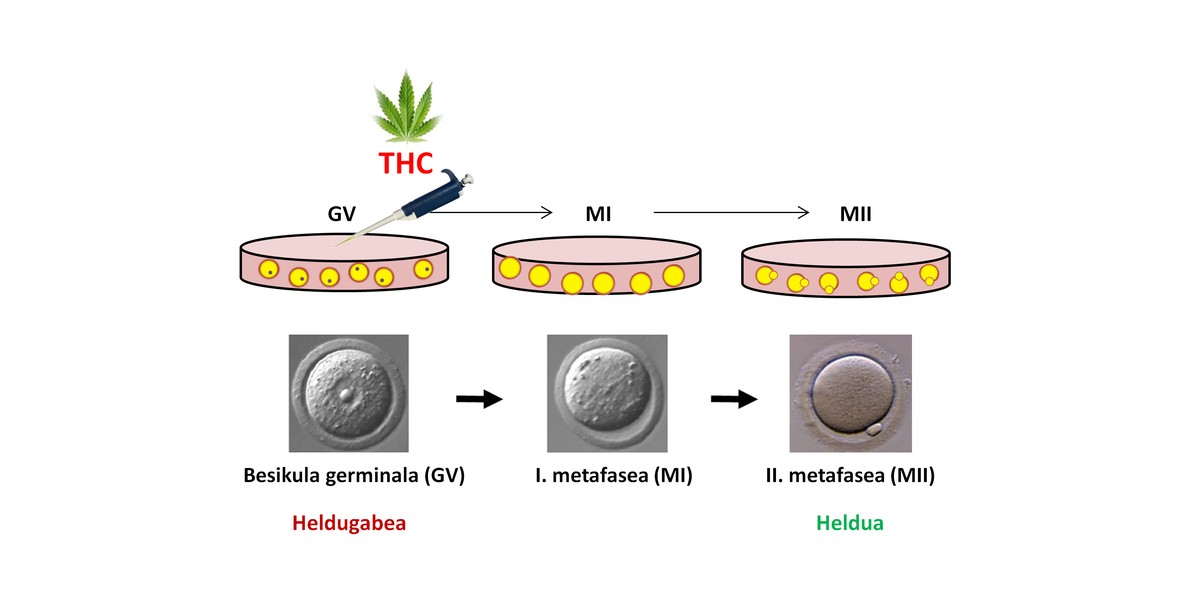
All these works have allowed us to better understand the process of in vitro maturation of the obocito and to open new ways to improve the effectiveness of the IVM technique. In fact, the use of phytocannabinoid THC as a component in IVM media would have greater advantages over synthetic cannabinoids. It should be noted that the IVM technique would improve the quality of life of women who have to go to the reproductive clinic, as it would be a much more beneficial, safe and economical option and, for many people, the only option to become pregnant.
Bibliography
CHA KY, KOO JJ, KO JJ, CHOI DH, HAN SY AND YOON TK. (1991): “Pregnancy after in vitro fertilization of human folleticular oocytes collected from nonstimulated cycles, their culture in vitro and their transfer in a donor oocyte program”. Fertility and Sterility, 55(1):109-13.
LU C, ZHANG Y, ZHENG X, SONG X, YANG R, YAN J, FENG H AND QIAO J. (2018): “Current perspectives on in vitro maturation and its effects on oocyte genetic and epigenetic profiles”. Science China Life Sciences, 61(6):633-643. doi: 10.1007/s11427-017-9280-4.
SR. HERTA AC, LOLICATO F AND SMITZ (2018): “In vitro follicle culture in the context of IVF”. Reproduction, 156(1):F59-F73. right: 10.1530/Rep-18-0173.
SUN QY, AND T NAGAI. (2003): “Molecular mechanisms underlying ? oocyte maturation and fertilization”. Journal of Reproduction and Development, 49: 347-359.
C. SCHINDLER (2011): “Protein kinases and protein phosphatases that regulate meiotic maturation in mouse oocytes”. Results Problems in Cell Differentiation, 53: 309-341.
ELSOHLY MA. (2002): “Chemical constituents of cannabis”. Haworth Press, New York.
CRESSEY, D. (2015): “The experimental cannabis”. Nature, 524: 280-283.
J. GOULD (2015): “The Cannabis Crop”. Nature, 525 (7570):S2-3.
CECCONI S, RAPINO C, DI NISIO V, ROSSI G, MACCARRONE M. (2020): “The (endo)cannabinoid signaling in female reproduction: What are the latest advances?” Progress Lipid Research, fit 77:101019: 10.1016/j.plipres.2019.1019.
PERALTA L, AGIRREGOITIA E, MENDOZA R, EXPOSITO A, CASIS L, MATORRAS R, AND AGIRREGOITIA N. (2011): “Expression and localization of cannabinoid receptors in human immature oocytes and unfertilized metaphase-II oocytes”. Reproductive Biomedicine Online, 23:372–9.
AGIRREGOITIA E, IBARRA-LECUE I, TOTORIKAGUENA L, MENDOZA R, EXPÓSITO A, MATORRAS R, URIGÜEN L, AGIRREGOITIA N. (2015): “Dynamics of expression and localization of the cannabinoid system in granulosa cells during oocyte nuclear maturation”. Fertility and Sterility, 104:753-760.
AGIRREGOITIA E, TOTORIKAGUENA L, EXPOSITO A, MENDOZA R, MATORRAS R, AGIRREGOITIA N. (2016): “Dynamic of expression and localization of cannabinoid-degrading enzymes FAAH and MGLL in relation to CB1 during meiotic maturation of human oocytes”. Cell and Tissue Research, 365:393-401.
SUN X AND DEY SK. (2012): “Endocannabinoid signaling in female reproduction”. ACS Chemical Neuroscience, 3:349-55.
Information Technology (2017): “CB1 cannabinoid receptor drives oocyte maturation and embryo development via PI3K/Act and MAPK pathways”. FASEB Journal, 31:3372-3382.
Related information (2016): “Exocannabinoids effect on in vitro bovine oocyte maturation via activation of ACT and ERK1/2”. Reproduction, 152:603–612.
TOTORIKAGUENA L, OLABARRIETA E, LÓPEZ-CARDONA AP, AGIRREGOITIA N, AGIRREGOITIA E. (2019): “Tetrahydrocannabinol modulates in vitro maturation of oocytes and improves the blastocyst rates after in vitro fertilization”. Cellular Physiology and Biochemistry, 53(3):439–52.

Gai honi buruzko eduki gehiago
Elhuyarrek garatutako teknologia



